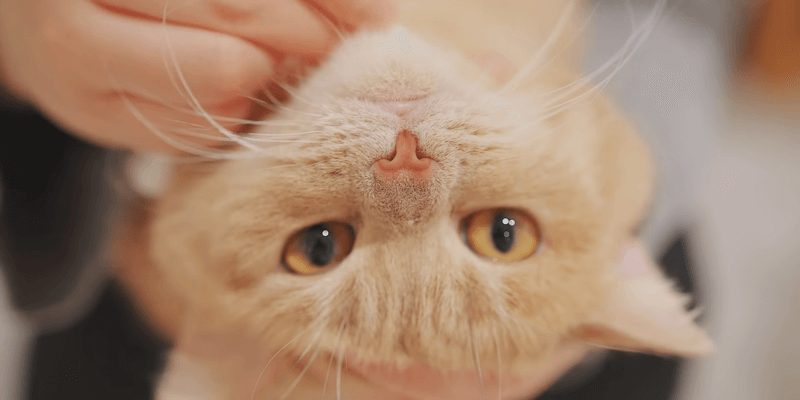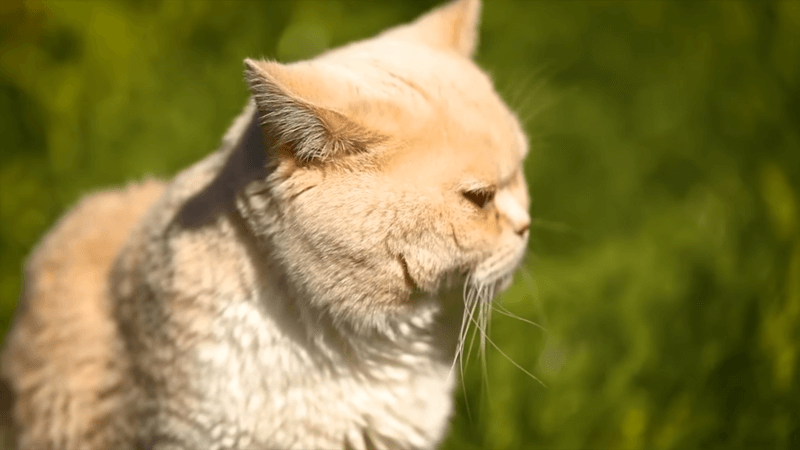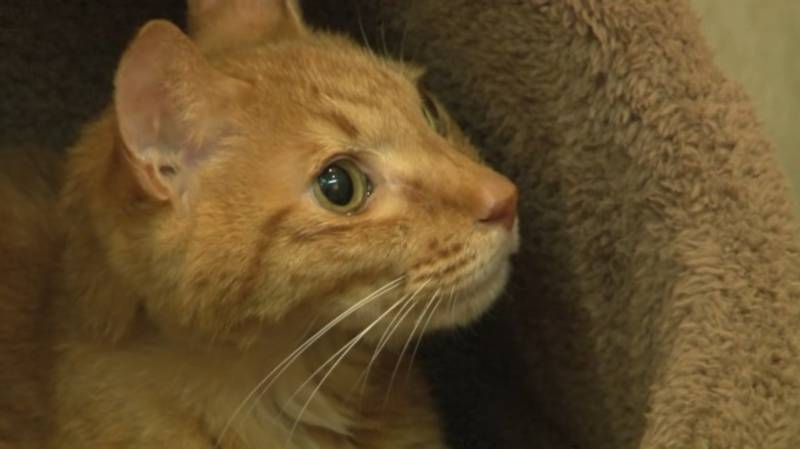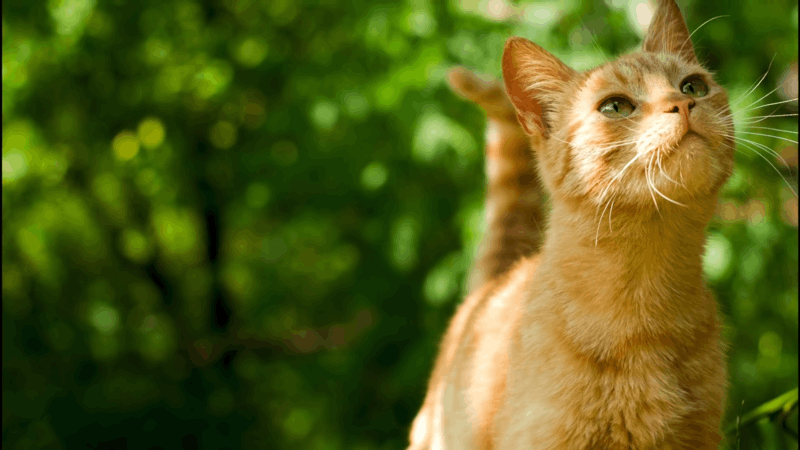No products in the cart.
What can cats see that humans can’t? In the world of cat vision, this query serves as the key to opening the door to a world where perception takes on a mysterious color. In this blog, we will explore the extraordinary aspects of feline vision, from their unique talent for navigating the ultraviolet and infrared spectrum to their mastery of low-light conditions and motion detection capabilities.
What Can Cats See That Humans Can’t?
Cats, mysterious creatures of the animal kingdom, have visual perception abilities far beyond human understanding. Their awareness extends into the ultraviolet (UV) and infrared (IR) domains of the light spectrum, unfamiliar territories beyond the limits of human vision. In other dimensions, cats detect hidden patterns, objects, and features that our discerning eyes cannot grasp. These feline friends have limited abilities in studying the UV and IR spectrum, deciphering the mysteries of urine signatures, tracking elusive prey, and discovering mysterious aspects of their surroundings. These phenomena remain beyond human understanding unless we turn to specialized tools to search for elusive answers. Visit Pet CBD Club website for even more great CBD pet products.

Penetrating Infrared and Ultraviolet Vistas
Cats, mystics of the animal kingdom, are gifted with a rare gift—the ability to transcend the elusive realms of ultraviolet (UV) and infrared (IR) light, hidden behind the veil of human perception. In these mysterious domains, they reveal hidden wavelengths of light that we cannot see. It is conjectured that this expanded vision gives them a spectral advantage, allowing them to detect the stealthy movements of prey, chart complex networks of urine traces, and be able to see glimpses of ethereal patterns or objects shimmering with the allure of UV or IR rays, hidden from humanity’s view.
Eyes That Pierce the Abyss of Dimness
Cats are talented nocturnal navigators, possessing the uncanny ability to penetrate the abyss of darkness, a feat far beyond human ability. The secret lies in their retinas, which are filled with rod-shaped cells meticulously adapted to the darkness of low-light environments. These stylish feline creatures can easily roam through dimly lit territories, emerging as formidable hunters during the twilight hours of dawn and dusk.
Master of Movement and Hunting
Amid dark plots, the cats become ballet masters of mysterious movement. Their precision tools are their eyes, which are finely tuned to even the smallest movements. Their hunting prowess stems from this extraordinary ability, allowing them to stalk and use their poaching tactics with incredible precision. Cats take on the role of experts on movement and the mysteries surrounding them, while humans lag behind in the darkness of dimly lit environments.
What Colors Do Cats See Best?
Cats are unusual in that they are attracted to the mysterious colors blue and green, which are in the sensory realm. They have especially sharp eyesight in the blue and emerald ranges due to their complex adaptation to lower wavelengths of light. By comparison, red and orange seem less vibrant and less seductive to these mysterious cat watchers.

Humans Versus Felines Perception
Each of the three unique threads that make up the human tapestry of vision—short for blue, medium for green, and long for red—is devoted to a particular component of the visible spectrum. With just two brushes, sensitive to the shorter wavelengths of blue and green, the tapestry is painted in the world of cats. Cats are colorblind due to this difference between our worlds, which makes them interesting spectators in life’s play.
The Enigmatic Conductor of Feline Behavior
Although the ability to perceive color is only a small part of a cat’s experience, it adds an element of mystery to their life story. Cats are known to incorporate a sense of color into their interactions, using these subtle cues to distinguish between objects, possible prey, and other cats. However, their vision is only one aspect of their sensory symphony. Additional conductors oversee their daily operations, including their highly developed senses of sound and smell, ability to detect movement, and night vision. Although mysterious, the world of color is really just a shadow in their giant cat universe.
How Far Can a Cat See?
The feline gaze extends into the unknown, a voyage measured in variables like luminosity and the size of the subject at hand. In optimal luminosity, a cat’s realm of sight expands, stretching across 100 to 200 yards (roughly 91 to 183 meters). However, this expanse undergoes dramatic transformations when dimness cloaks the landscape, leaving their nocturnal vision to unveil its secrets.

Cats’ Adaptation to Light
Cats are mysterious animals skilled at striking a balance between illuminating daytime scenes and hiding from view in dimly lit creatures. Their retinas consist of rod cells that function well in the dark and cone cells that function well in daylight. Thanks to their collective knowledge, they can see beyond the range of light, which ensures their status as excellent hunters in both bright and moonlit environments.
How Health and Aging Affect Your Cat’s Vision
The cat’s vision is subject to the ups and downs of age and health, just like the human story. Cats may eventually have to deal with the mysteries of vision as they age, including common ocular mysteries like cataracts, glaucoma, and retinal degeneration. Frequent consultations with the veterinarian oracle act as a caretaker for their eye mystery, upholding the feline heritage.
Feline Long-Distance Vision in the Wilderness
In the vast untamed wilderness, cats use their foresight to find many reasons, including pursuit of prey and vigilance. These stealthy predators, who have mastered ambush tactics, deploy their keen vision to reveal potential prey from afar, unraveling the choreography of small creatures such as nomadic birds, onions, and other elusive objects. Furthermore, their visual mystique becomes the watchful guardian of their domain, watching for the arrival of shadows, potential threats, and their mysterious opponents.”
Conclusion
The exploration of feline vision raises a thought-provoking question: “What can cats see that humans can’t?” It leads us to ponder the enigmatic dimensions beyond human perception that cats have access to. Cats, in their dual role as observers and enigmatic dancers in life’s grand tapestry, serve as a reminder that the enigma of sight extends beyond what our human eyes can behold.
I am Nelson Cooper, I pursue my passion for writing and my belief is that cats love humans. I enjoy traveling and have a deep appreciation for the beauty of nature, as well as a soft spot for animals, particularly cats.


